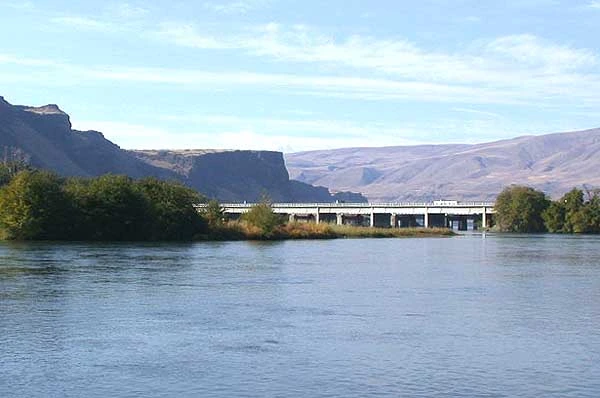
Addressing the water challenges associated with providing water for Arizona’s second 100 years will require stewardship, innovation, and collaboration. It took collaboration to get the Salt River Project and Central Arizona Project built. It took collaboration for the recent test run of the Yuma Desalting Plant, a focus of the WRRC’s 2011 annual conference held last April in Yuma, Arizona. This year’s conference, scheduled for January 24, 2012, is being planned in collaboration with ASU’s Morrison Institute for Public Policy, and it will focus on some of the water-related choices that will have to be made throughout the state. While past water projects of significant scale and cost were the chosen pathway to increasing water supply, lack of financial capital as well as questions about future water security for our communities are now critical determinants of solutions that will meet our state’s future water needs. Will we recycle water like Orange County, California? Will we see significantly more use of gray water and rainwater by households? Can conservation forestall the need for large investments? What about meeting the water needs of our natural environment? Dialogue and collaboration are critical to determining the paths we take.
In late August 2011, the WRRC had the opportunity to convene approximately 20 agricultural and environmental stakeholders from Arizona to visit Central Oregon. The purpose of the trip was to build communication channels among the representatives of both sectors and to learn about successful examples of collaboration. We spent the better part of a week visiting areas where the agricultural/ranching community and what is often referred to as the conservation community (although I think we all are members of the conservation community) have developed approaches to water stewardship that satisfy the interests of both sectors. It is hoped that the actions undertaken will enhance stream flow to aid the spawning of wild salmon and other fish habitat. The trip was made possible by a grant from the Walton Family Foundation and was planned in collaboration with the WRRC’s sister organization at Colorado State University, the Colorado Water Institute. A group from Colorado made a similar trip in mid-September.
We visited the John Day-Prairie City area, the Three Sisters- Deschutes River region, and sites in Klamath Falls. In each area, we met with ranchers and conservation organization representatives to hear about their successful efforts. We ate lunch at a park in Prairie City, at an organic farm in Three Sisters, and at the Agency Ranch in the Klamath basin. Among the things we saw: wild salmon spawning; an extremely productive organic farming operation; an elk ranch; streams, creeks and even headwaters; beautiful open grazing pastures; a state-of-the art fish screen and ladder; and so much more. More importantly, we heard about the various efforts to conserve or redirect water through adjustments to irrigation practices and replacement of leaky irrigation systems. We heard about these efforts from the project collaborators, all of whom took time from their busy schedules to share their experiences and break bread with us.
We learned so much. While recognizing that Oregon and Arizona have very different water endowments and uses, a few of the lessons learned are equally applicable to our situation. First is the importance of drivers and what I will call enabling mechanisms. Oregon state law has some innovative provisions relating to leased and transferred water rights. The regionally important Bonneville Power Authority is required to address salmon issues and this requirement has resulted in a source of sizable funding for the voluntary arrangements between ranchers/farmers and conservation organizations. We also learned that developing and implementing the various programs took considerable time and often relied on multiple funding sources. We heard how some projects, such as the Three Sisters Irrigation District fish ladder and screen, were able to take advantage of one-time or shortterm funding opportunities. In other cases, federal programs that provide funding through the U.S. Department of Agriculture were important. Unfortunately, the future of some of these programs is uncertain due to changing federal priorities. Of critical importance were the relationships developed among the parties. Trust is a necessary condition for effective partnerships. Its development also takes time. Along with feeling the beautiful air, we could feel the strength of the relationships of the people working within and across the organizations.
While Arizona and Oregon are so very different, we share many similarities. We share a love for the natural beauty of our state and a desire to be good stewards of its resources. We recognize our challenges and have a commitment to develop solutions to them. It is important for us to open up the channels of communication so that we can build the trust that is required for developing the partnerships needed for solution formulation and implementation.Money helps, too, and this is currently a challenge for us all. Key factors to success will include: trust, staying power (hard work!), communication, collaboration, commitment, leverage, drivers, and enabling mechanisms.
The participants in the Oregon field trip engaged in extensive dialogue at the sites and on the long bus rides between them. Many commented on the value of the one-on-one or small group discussions that occurred among the Arizonans. They are looking forward to more learning and communication here in Arizona. I am, too!As one of the many opportunities we will have for learning and dialogue on meeting Arizona’s water needs in our second 100 years as a state, please consider participating in our January 24, 2012 conference.
Dechutes photo: Decumanus at English Wikipedia. - Transferred from en.wikipedia to Commons., CC BY-SA 3.0, https://commons.wikimedia.org/w/index.php?curid=6320847

